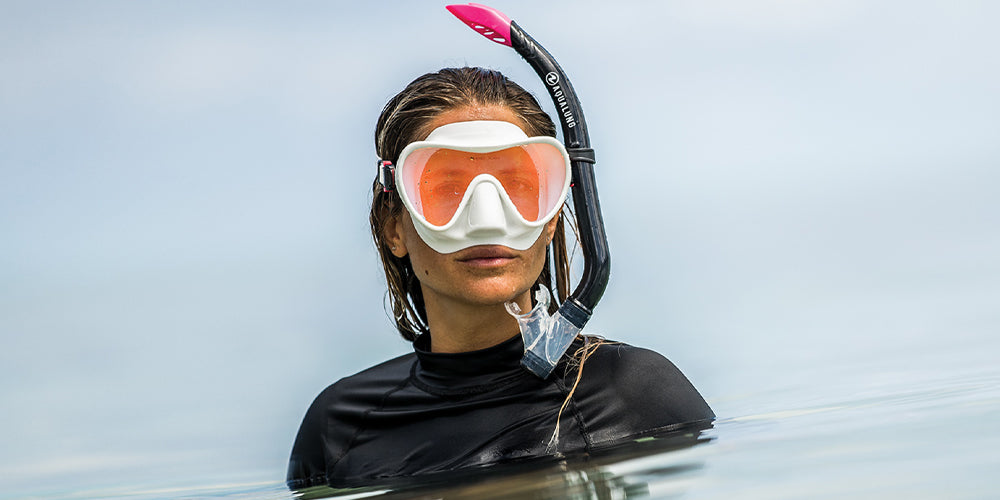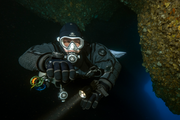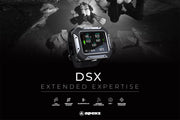How To Choose The Best Snorkelling Mask

Are you planning a snorkelling trip soon? If so, choosing the right snorkelling mask is crucial to ensuring an enjoyable and safe experience. A poorly fitting or low-quality mask can cause discomfort, leaks, and fogging, which can quickly ruin a great snorkelling excursion.
To help you choose the perfect mask for your needs, we've compiled a list of key factors that you should consider before making a purchase. These factors include fit, field of vision, material, purge valve, and anti-fog coating. By understanding these factors and how they affect your snorkelling experience, you'll be able to make an informed decision when selecting a snorkelling mask that's right for you.
In the following sections, we'll explore each of these factors in more detail and provide tips and insights to help you choose the best snorkelling mask. Whether you're a seasoned snorkeller or a beginner, understanding these factors will help you make an informed decision and ensure that your next snorkelling trip is a success. So, let's dive in!
CONTENTS
The areas we are going to cover in this blog post about factors to consider when choosing a snorkelling mask are:
- Why Fit Is Important When Choosing A Snorkelling Mask?
- Why Is Field Of Vision Important When Choosing A Snorkelling Mask?
- What Are The Best Materials For Snorkelling Masks?
- How Do You Stop Your Snorkelling Mask Fogging Up?
- Now You Know How To Choose The Right Snorkelling Mask

Why Fit Is Important When Choosing a Snorkelling Mask?
Why Is Fit Important For Your Mask?
Fit is one of the most important factors to consider when choosing a snorkelling mask. A well-fitting mask is essential to creating a comfortable and leak-free seal around your face. A mask that doesn't fit well can cause discomfort, pain, and even skin irritation, which can quickly ruin a snorkelling experience.
Furthermore, a poorly fitting mask can also leak water, which can make it difficult to see and breathe properly. This can be dangerous, especially for beginners who may feel panicked and disoriented underwater.
To ensure a good fit, it's important to try on different masks and check for a comfortable and secure seal. The mask should fit snugly around your face without feeling too tight or causing any discomfort. You can also check for a good seal by placing the mask on your face without the strap and inhaling gently through your nose. If the mask stays in place and doesn't leak, it's a good fit for you.
In short, fit is essential to creating a comfortable, leak-free seal that allows you to enjoy your snorkelling experience to the fullest. Take the time to find a mask that fits well, and you'll be rewarded with a comfortable and enjoyable snorkelling adventure.
Tips For Ensuring A Good Fitting Snorkelling Mask
Ensuring a good fitting snorkelling mask is crucial for a comfortable and safe snorkelling experience. Here are some top tips to consider when trying on a mask to ensure a good fit:
- Try on different masks: Don't settle for the first mask you try on. Different masks have different shapes, sizes, and features. Try on a few masks to find the one that fits your face shape the best.
- Check for a good seal: Place the mask on your face without the strap and inhale gently through your nose. If the mask stays in place and doesn't leak, it's a good fit for you.
- Check for pressure points: Make sure the mask doesn't press too hard against any part of your face, as this can cause discomfort and pain.
- Check for the strap placement: The strap should be positioned at the widest part of your head to create a comfortable and secure fit.
- Consider adjustable straps: Look for masks with adjustable straps to ensure a custom fit that can be tailored to your specific needs.
By taking the time to try on different masks and checking for a good seal, pressure points, and strap placement, you'll be able to find a mask that fits comfortably and securely. Don't rush the process, as finding the right mask can make a huge difference in your overall snorkelling experience.
How To Check For A Good Seal When Fitting A Snorkelling Mask
Putting on a snorkelling mask is easy. However, it's important to make sure that the seal between your face and the mask provides a good fit so you can enjoy a leak-free dive.
To check for a good seal when fitting a snorkelling mask, make sure that there aren't any gaps or bubbles around
Checking for a good seal is one of the most important factors to consider when choosing a snorkelling mask. A good seal ensures that water doesn't leak into the mask, allowing you to see clearly and breathe easily underwater. Here's a detailed explanation of how to check for a good seal when choosing a snorkelling mask:
- Place the mask on your face: Start by placing the mask on your face without the strap, ensuring that it covers your nose and mouth.
- Inhale gently through your nose: Without exhaling, inhale gently through your nose to create a suction effect. This will help create a seal between your face and the mask.
- Hold your breath: Hold your breath for a few seconds while keeping your face still. This will allow you to check whether the mask is leaking or not.
- Exhale and remove the mask: After holding your breath for a few seconds, exhale and remove the mask from your face.
- Check for leaks: Check the inside of the mask for any signs of water leaks. If there are no leaks, the mask has a good seal.
It's important to note that checking for a good seal may take a bit of time and patience. It's also important to try on different masks to find the one that fits your face shape the best. This is where contacting a scuba diving centre for help can be useful. Scuba diving centres have experienced staff who can help you find the right snorkelling mask for your face shape and size. They can also help you check for a good seal and offer advice on how to properly maintain your mask for optimal performance. Don't hesitate to seek help from professionals, as they can make a big difference in finding the perfect snorkelling mask.

Why is Field of Vision Important When Choosing A Snorkelling Mask?
Why is field of vision is important to snorkellers?
The field of vision is an essential factor to consider when purchasing a snorkelling mask because it determines how much you can see underwater. A wide field of vision allows you to observe a more comprehensive view of the underwater environment without having to turn your head too much, enabling you to enjoy your snorkelling experience better.
A mask with a small field of vision can limit the amount of underwater scenery you can see, reducing the pleasure of the snorkelling experience. Moreover, a narrow field of vision can be dangerous since you might miss any possible hazards that may be approaching from the side.
A snorkelling mask's field of vision is determined by the size and shape of the mask's lenses. A mask with larger lenses will offer a wider field of vision, while a mask with smaller lenses will have a smaller field of view. Additionally, the positioning of the lenses and the distance between the eyes and lenses can also affect the field of vision.
Therefore, when purchasing a snorkelling mask, consider selecting a mask with large lenses that provide a broad and unobstructed field of view, allowing you to enjoy the underwater environment with ease and ensuring a safer snorkelling experience.
What Is The Difference Between Single Lens & Twin Lens Snorkelling Masks?
Single-lens and twin-lens snorkelling masks differ in terms of their construction and design, which affect their functionality and performance underwater. Here are the key differences between these two types of masks:
- Lens Configuration: Single-lens snorkelling masks have a single, large lens that spans across the entire front of the mask. In contrast, twin-lens snorkelling masks feature two smaller lenses that are separated by a nose bridge.
- Field of View: Single-lens masks generally offer a wider and more panoramic field of view since there is no nose bridge that obstructs the view. Twin-lens masks, on the other hand, can provide a more natural view, with less distortion around the edges of the lenses.
- Volume: Single-lens masks tend to have a larger internal volume than twin-lens masks, which means that they require more air to equalize the pressure inside the mask as a snorkeller descends. This can make them more difficult to clear, especially for new snorkellers. Twin-lens masks have a smaller internal volume and are generally easier to clear.
- Fit: Single-lens masks often have a wider frame and larger skirt, making them better suited for larger faces. Twin-lens masks typically have a narrower frame and skirt, which can provide a better fit for smaller faces.
- Price: Single-lens masks are often more expensive than twin-lens masks, as they require more material to manufacture and can provide a wider field of view.
Ultimately, the choice between a single-lens or twin-lens snorkelling mask comes down to personal preference and individual needs. If a wide field of view is a priority, a single-lens mask may be the better choice, but if ease of clearing and a more natural view is preferred, a twin-lens mask may be the way to go.
What Are The Benefits Of A Wider Field Of Vision?
A wider field of vision is a crucial factor to consider when selecting a snorkelling mask because it provides a more immersive and enjoyable snorkelling experience. Here are some of the benefits of having a wider field of vision:
- Enhanced visibility: A wider field of vision allows snorkellers to see more of the underwater environment, including a wider range of marine life and more expansive views of the coral reef or the ocean floor. This means that snorkellers can enjoy a more immersive and interesting experience.
- Improved safety: A wider field of vision also allows snorkellers to be more aware of their surroundings, including any potential hazards such as rocks or other marine life that might pose a risk. With a wider view, snorkellers can identify and avoid such hazards more easily.
- Reduced motion sickness: Snorkellers who experience motion sickness may find that a wider field of vision helps to reduce symptoms. This is because a wider view can help to reduce the feeling of disorientation that can be associated with motion sickness.
- Greater comfort: A wider field of vision can also provide greater comfort for snorkellers by reducing the need to constantly turn their heads to see more of the underwater environment. With a wider view, snorkellers can relax and enjoy their snorkelling experience without straining their necks.
A wider field of vision is essential to a more enjoyable and safer snorkelling experience. By providing enhanced visibility, improved safety, reduced motion sickness, and greater comfort, a snorkelling mask with a wider field of vision can help to make the experience more immersive and enjoyable for snorkellers of all levels.

What Are The Best Materials For Snorkelling Masks?
What are the best materials to choose when buying a snorkelling mask?
The material of a snorkelling mask plays a significant role in determining the mask's comfort and ability to seal to the snorkeller's face. Here are some of the best materials for a snorkelling mask to increase comfort and seal:
- Silicone: Silicone is a popular material for the mask skirt, which is the part of the mask that comes into contact with the snorkeller's face. Silicone is soft, flexible, and comfortable, and can provide a good seal to a wide range of face shapes and sizes. Additionally, silicone is resistant to UV rays and saltwater, making it durable and long-lasting.
- Tempered glass: Tempered glass is an excellent material for the mask lenses. Tempered glass is stronger and more resistant to scratches and impacts than regular glass. It is also more durable than plastic lenses and provides better optical clarity. Tempered glass lenses are available in clear, tinted, or mirrored options, which can help reduce glare and provide better visibility in different lighting conditions.
- Thermoplastic elastomers (TPE): TPE is a material that is often used for the mask frame. TPE is flexible, lightweight, and durable, and can provide a comfortable fit while also allowing the mask to maintain its shape. Additionally, TPE is resistant to UV rays and saltwater, making it a good choice for a snorkelling mask.
- Neoprene: Neoprene is a material that is often used for the strap of the snorkelling mask. Neoprene is soft, stretchy, and comfortable, and can help keep the mask securely in place while also reducing pressure on the back of the head. Additionally, neoprene is resistant to UV rays and saltwater, making it a durable and long-lasting material for the strap
It is recommended that you choose a silicone for the mask skirt, tempered glass for the lenses, TPE for the frame, and neoprene for the strap are some of the best materials for a snorkelling mask to increase comfort and seal. These materials are all durable, long-lasting, and resistant to the harsh conditions of saltwater and UV rays, making them ideal for snorkelling masks.

How Do You Stop Your Snorkelling Mask Fogging Up?
Some snorkelling masks come with an anti-fog coating on the lenses, while others do not. The purpose of an anti-fog coating is to prevent the buildup of condensation on the inside of the lenses, which can obscure the snorkeller's vision and make it difficult to see clearly underwater. The main cause of fogging in snorkelling masks is the difference in temperature between the warm air inside the mask and the cooler water outside the mask. When warm, moist air comes into contact with a cool surface, such as the inside of a snorkelling mask lens, it can condense and form droplets that fog up the lens.
To prevent this, some snorkelling masks are coated with an anti-fog coating. This coating is typically made of a hydrophilic material that attracts and spreads water molecules evenly across the surface of the lens, preventing them from forming droplets that can fog up the lens. Some anti-fog coatings are also made with a special chemical treatment that helps to repel moisture and reduce surface tension, making it more difficult for droplets to form.
Some snorkelling masks come with an anti-fog coating on the lenses to prevent the buildup of condensation and fogging. This coating is typically made of a hydrophilic material that attracts and spreads water molecules evenly across the lens surface, preventing them from forming droplets that can obscure the snorkeller's vision.
Why Is Defog Great To Stop Your Mask Fogging Up?
Commercial defog is a specially designed solution that is used to prevent the buildup of condensation on the inside of a snorkelling mask lens. Here are some reasons why commercial defog is best for stopping your mask from fogging up:
- Effective: Commercial defog is specifically designed to prevent fogging on snorkelling mask lenses. It is formulated with ingredients that help to prevent the buildup of condensation, such as surfactants, glycols, or other chemicals that reduce the surface tension of water. These ingredients work together to create a barrier that prevents moisture from sticking to the lens, thus preventing fogging.
- Safe: Commercial defog is safe to use on snorkelling mask lenses. It is designed to be non-toxic, non-irritating, and hypoallergenic, making it suitable for use on sensitive skin. Additionally, commercial defog does not damage or degrade the lens material, making it a safe and effective option for preventing fogging.
- Convenient: Commercial defog is easy to use and can be applied quickly and easily to the inside of the snorkelling mask lens. Most commercial defog products come in a spray or gel form, which can be applied directly to the lens and then wiped off with a clean cloth.
- Long-lasting: Commercial defog is long-lasting and can provide effective fog prevention for several hours. Some products are even designed to provide fog prevention for an entire day of snorkelling.
Commercial defog is the best option for preventing your snorkelling mask from fogging up because it is specifically designed for this purpose, it is safe to use, convenient, and long-lasting. By using a commercial defog product, snorkellers can enjoy clear and unobstructed vision while snorkelling, making for a more enjoyable and immersive experience.

Now You Know How To Choose The Right Snorkelling Mask
In conclusion, choosing the right snorkelling mask is essential for an enjoyable and safe snorkelling experience. The blog post has outlined several important factors to consider when selecting a snorkelling mask. Firstly, a proper fit is crucial for comfort and preventing leaks. Secondly, a wide field of vision is important to enhance the snorkelling experience and promote safety. Thirdly, materials such as silicone and tempered glass offer durability, comfort, and a good seal. Finally, fogging is a common issue that can be addressed with commercial defog solutions. By considering these factors when selecting a snorkelling mask, snorkellers can ensure a comfortable, clear, and enjoyable underwater experience.






